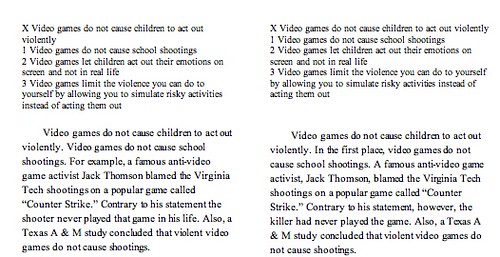At least 10 Upper East Side nursery schools are closing their doors today to make time for a conference on an Italian teaching philosophy that is challenging American methods.
Nearly 900 people will crowd the 92nd Street Y to learn about Reggio Emilia — named after the small Italian town, population 140,000, where the approach was developed and that is known for its fine wines and parmigianas — and hundreds more are scheduled to tune in to the 92nd Street Y's first major Internet broadcast of a conference.
Unlike many foreign countries, Italy does not outscore America on standardized tests (its children score about the same), but its approach to teaching 4- and 5-year-olds has captivated educators across this country. They say the philosophy elicits more from the young children than ever seemed possible.
Reggio eschews traditional lesson plans and instead encourages 4- and 5-year-olds to develop their own projects.
About 500 Americans visit Reggio schools in Italy every year to marvel at these projects, and a traveling exhibit of the projects has been making its way across the country. The U.S. liaison to the nonprofit Reggio Children group that organizes the exhibit, Lella Gandini, said interest appears to have grown "immensely" in the past several years, especially in New York.
The director of All Souls School on the Upper East Side, Jean Mandelbaum, one of the school directors who allowed children to skip a day so staff could attend the conference, said that when she first visited Reggio she was astonished to see the quality of work produced by the schools' method. "It looks like they're geniuses, but they're not geniuses. These Italian kids who are wonderful are no more wonderful than our American kids," she said.
By giving children more time to do longer projects and allowing them to dictate their own curriculum, the Reggio method brings out the best in them, she said. At her school, she said, children have created a life-size penguin; several robots, and a model of the 79th Street cross-town bus — all through their own ingenuity. Through the process, teachers make sure to pass on certain skills. They also push students to revisit projects, making them months-long endeavors rather than the fancy of just a few hours.
"The idea is not to just splash something off and bring it home to mommy. Rather, most of the work is considered work in progress," she said.
etc.
Oh yes. Yet another "challenge" to American teaching methods. Nobody here in America has ever heard of the project method.
It's hopeless.
We're all going to have to band together and start charter schools to teach the liberal arts disciplines via direct instruction. We'll hire Siegfried Engelmann and the precision teaching folks to oversee.
We'll also recruit a disciplinary specialist or two to see to it we're teaching the actual disicplines as they exist in the real world, not the fantasy interdisciplinary world of the American ed school.
When it comes to the liberal arts disciplines, the "real world" is the world of the professors and researchers who produce the knowledge our schools are supposed to teach.
the liberal arts disciplines:
- mathematics
- English
- science
- philosophy
- history
- foreign languages
- music
- art
Ed says many colleges include the social sciences as a liberal arts discipline.
Ed speaking:
Each discipline has a corresponding set of skills that emerge from the discipline. In mathematics you have quantitative reasoning; in science you have the scientific method; in history you have historical analysis. Some form of competency in writing is usually attached to English.
Ed thinks it's important to have the disciplines "first" and the skills second, because it's too easy to get into "interdisciplinary mush" when it's the other way around. If your requirement is "social scientific reasoning" as opposed to history, then a student can take a smorgasbord of courses in anthropology, sociology, etc, without taking a history course, thus missing a fundamental discipline in the liberal arts canon.
Ed again:
There's no question there are social scientists who would disagree with this, but it's not for nothing that public and private schools both require history not social science. That's true because most people see history as a fundamental liberal arts discipline. Most people also make the rightful assumption that every citizen needs to know something about the history of his own country to exercise his citizenship rights effectively. The social studies movement agreed with this premise, but got rid of the study of history and kept the study of citizenship.









